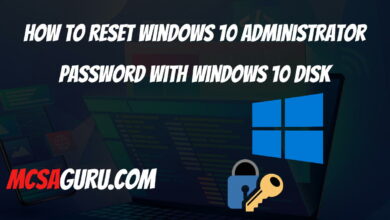Deploying Hybrid Hyper-V Clusters with Azure and PowerShell: A Step-by-Step Guide
Table of Contents
Introduction:
Hybrid Hyper-V clusters offer a flexible, scalable infrastructure by combining on-premises Hyper-V with Azure’s cloud capabilities. This setup provides the resilience and elasticity of the cloud while allowing businesses to keep sensitive data on-premises. PowerShell, with its powerful scripting capabilities, simplifies the deployment and management of these hybrid clusters. This article outlines a step-by-step process to deploy a hybrid Hyper-V cluster using Azure and PowerShell, aiming to provide a clear, concise guide for IT administrators and engineers.
Steps to Deploy Hybrid Hyper-V Clusters:
1. Prerequisites:
- An Azure subscription.
- An operational on-premises Hyper-V environment.
- PowerShell 7 or later installed on your management computer.
2. Install the Azure PowerShell Module
Install-Module -Name Az -Scope CurrentUser -Repository PSGallery -Force3. Connect to Azure
Connect-AzAccount
Connect-AzAccount4. Create Azure Network Resources
- Script to create a virtual network (VNet) and a subnet in Azure.
$vnetParams = @{
Name = "HybridVNet"
ResourceGroupName = "HybridResources"
Location = "East US"
AddressPrefix = "10.0.0.0/16"
}
$vnet = New-AzVirtualNetwork @vnetParams
$subnetConfig = Add-AzVirtualNetworkSubnetConfig -Name "DefaultSubnet" -AddressPrefix "10.0.1.0/24" -VirtualNetwork $vnet
$vnet | Set-AzVirtualNetwork5. Configure Site-to-Site VPN
- A script to establish a VPN connection between your on-premises network and Azure VNet.
# Assuming LocalNetworkGateway and VirtualNetworkGateway already exist
$connectionParams = @{
Name = "S2SVpnConnection"
ResourceGroupName = "HybridResources"
Location = "East US"
VirtualNetworkGateway1 = $vng
LocalNetworkGateway2 = $lng
ConnectionType = "IPsec"
RoutingWeight = 10
SharedKey = "YourStrongSharedKey"
}
New-AzVirtualNetworkGatewayConnection @connectionParams
6. Deploy Hyper-V Cluster VMs in Azure
To deploy VMs in Azure and configure them as Hyper-V hosts, you’ll need to follow a process that involves creating the VMs, configuring the necessary roles and features, and then integrating them into your Hyper-V cluster. Below is a script that demonstrates how to create a single VM configured as a Hyper-V host. For multiple VMs, repeat the process or adapt the script to loop through a list of desired VM names.
# Variables for common parameters
$resourceGroupName = "HybridResources"
$location = "East US"
$vmSize = "Standard_D2s_v3"
$imagePublisher = "MicrosoftWindowsServer"
$imageOffer = "WindowsServer"
$imageSku = "2019-Datacenter"
$adminUsername = "azureuser"
$adminPassword = ConvertTo-SecureString "yourStrongPassword!" -AsPlainText -Force
$virtualNetworkName = "HybridVNet"
$subnetName = "DefaultSubnet"
# Create a new VM
$vmName = "HyperVHost1"
$pip = New-AzPublicIpAddress -Name "$vmName-pip" -ResourceGroupName $resourceGroupName -Location $location -AllocationMethod Dynamic
$subnet = Get-AzVirtualNetworkSubnetConfig -Name $subnetName -VirtualNetwork (Get-AzVirtualNetwork -Name $virtualNetworkName -ResourceGroupName $resourceGroupName)
$nic = New-AzNetworkInterface -Name "$vmName-nic" -ResourceGroupName $resourceGroupName -Location $location -SubnetId $subnet.Id -PublicIpAddressId $pip.Id
$vmConfig = New-AzVMConfig -VMName $vmName -VMSize $vmSize | Set-AzVMOperatingSystem -Windows -ComputerName $vmName -Credential (New-Object System.Management.Automation.PSCredential ($adminUsername, $adminPassword)) | Set-AzVMSourceImage -PublisherName $imagePublisher -Offer $imageOffer -Skus $imageSku -Version "latest" | Add-AzVMNetworkInterface -Id $nic.Id
New-AzVM -ResourceGroupName $resourceGroupName -Location $location -VM $vmConfig
# Install Hyper-V Role on the VM
Invoke-AzVMRunCommand -ResourceGroupName $resourceGroupName -VMName $vmName -CommandId 'RunPowerShellScript' -ScriptPath 'Install-HyperVRole.ps1'
The Install-HyperVRole.ps1 script referenced in the last line should contain PowerShell commands to install the Hyper-V role on the VM. Since you cannot directly execute role installations on Azure VMs using a simple script due to the need for a reboot and further configurations, consider managing this through Desired State Configuration (DSC) or manually configuring the VMs post-creation.
The above example illustrates creating a single Azure VM and preparing it for Hyper-V. In a real-world scenario, you would need to automate the deployment of multiple VMs and configure networking, storage, and other settings according to your cluster’s requirements.
7. Integrate Azure and On-Premises Hyper-V Clusters
Integrating Azure and on-premises Hyper-V clusters involves configuring networking for seamless connectivity, setting up identity and access management for cross-environment management, and ensuring that your management tools can communicate with resources regardless of their location.
Conclusion:
Deploying hybrid Hyper-V clusters with Azure and PowerShell offers a pathway to modernize infrastructure with minimal disruption. This guide provides the foundational steps necessary for IT professionals to leverage the cloud’s power while maintaining on-premises workloads. As hybrid environments become the norm, mastering these deployments will be crucial for maintaining competitive, efficient, and scalable IT operations.
FAQs:
Q: Can I use existing on-premises Hyper-V VMs with Azure?
- A: Yes, existing on-premises VMs can be integrated into the hybrid setup through site-to-site VPN, allowing seamless connectivity between on-premises and Azure resources.
Q: How do I manage hybrid Hyper-V clusters?
- A: Management can be streamlined using PowerShell scripts for automation and Azure’s management tools for visibility across both environments.
Q: Are there any cost considerations for deploying hybrid Hyper-V clusters?
- A: While hybrid deployments leverage the cloud’s scalability, it’s essential to monitor Azure resource consumption and VPN gateway costs to optimize spending.






